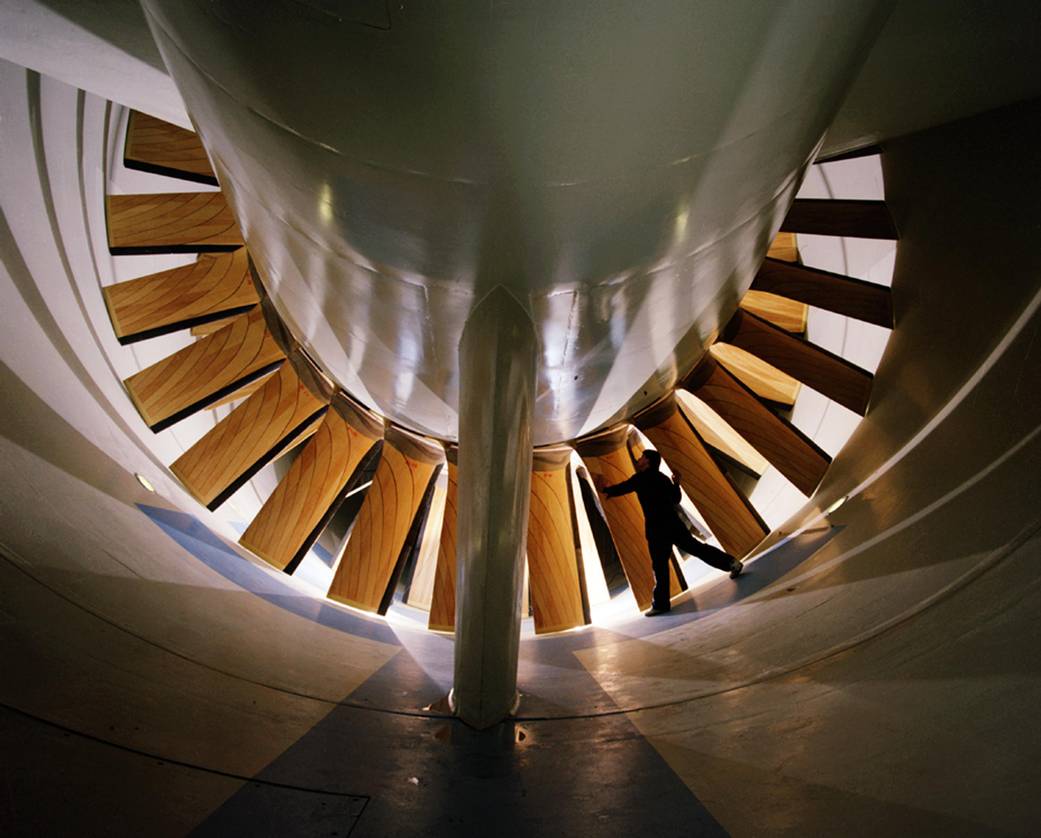
Grady McCoy stands in the Langley Research Center’s 16 foot transonic tunnel, as light reflects off the fan blades in this image from 1990.
As part of a national initiative to optimize government-owned wind tunnels, NASA’s Langley Research Center shut down the tunnel and transitioned work to other facilities. The tunnel was placed on mothball status beginning Sept. 30, 2004, meaning that the facility could be made operational within six to 12 months and that maintenance to the tunnel would be limited to facility preservation only.
During its operational lifetime, the tunnel supported most major military programs both in their developmental stage and in on-going propulsion integration research. This long history has included all fighters since the 1960s, such as the F-14, F-15, F-18 and the Joint Strike Fighter. The tunnel has also supported NASA programs by doing extensive testing for the space shuttle, reusable launch vehicles, Hyper-X and other experimental programs.
Wind tunnels help researchers understand the forces acting on an object as it moves through the atmosphere and are used in conjunction with computers and flight simulators to learn about the flight characteristics of new aircraft designs and design modifications.Image Credit: NASA

























